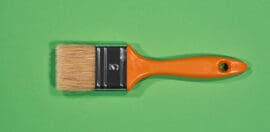A picture I can believe in

18 November 2021 at 8:32 am
David Crosbie shares some important lessons for all charities about the importance of image and images.
Henrik Ibsen the Norwegian realist playwright said: “A thousand words leave not the same deep impression as does a single deed.” He was right.
The original Ibsen saying seeded the now common expression, “a picture is worth a thousand words.”
It was almost impossible to miss our prime minister’s image in the visual media over the last week. Scott Morrison and his team have been working overtime on staging pictures; from driving an electric car, filling up an electric car (you don’t need to hold the nozzle Scott – it’s a plug), cooking gnocchi, having a haircut, making spring rolls, handing out sausages, serving breakfast, visiting factories, unveiling a statue, attending commemorative services, all surrounded by smiling affirming people.
The media now call this campaigning. Paul Keating once described it as “throwing the switch to vaudeville”. What we know is that all this activity is about brand Morrison, the image, not the actions, not even the words.
It is hard to be too critical of our prime minister and his team – he understands that this is how the game is now played.
To some degree it has always been so. We are a very visual species. We rely on what we see to make our way in the world. On social media, we like or dislike images to show our allegiances, to attach value to certain people or ideas.
The importance of the political image has never been greater. How many people read whole articles in a newspaper or online these days? Many of us are time poor and our attention span seems to be diminishing. An image can confirm our views, affirm our understanding of people, places, and the world around us, all in a fraction of a second. As pointed out recently by three British communication academics;
“Visual political communication has become increasingly important over recent years. It is central to the politics of illusion, and plays an important role in the phenomenon of populist rhetoric. Visuals are thus central to the politics of our time, for good or ill, with the power to stimulate emotions and elicit engagement – among an often disengaged and apathetic electorate.”
Pat Hudson the cartoonist captured this phenomenon well this week with a cartoon depicting the media scrum listening and watching closely as the opposition leader talked about COP26, that is until Scott Morrison dressed in an apron started cooking and serving up sausages. The media scrum had a decision to make – a talking head opposition leader saying important things about the future of our planet or the smiling prime minister with his tongs around a sausage – which will the newspapers see as offering a connection to their readers? Which image makes the news? Which gets more space?
BREAKING NEWS
All the important stories from @phudsonink (me!)#auspol #ScottyFromPhotoOps #ScottyTheAnnouncer #media @ScottMorrisonMP @AlboMP @abcnews @9NewsAUS @7NewsAustralia @10NewsFirst @GuardianAus @theage @smh @newscomauHQ pic.twitter.com/ykdM5kHcNX— Hudson Cartoons (@phudsonink) November 11, 2021
This is partly how Scott Morrison won the last election – as pointed out by Chris Wallace in The Conversation:
“Morrison relentlessly toured his self-conjured, trucker-capped ‘daggy dad’ persona across Australia during the campaign, generating daily vision of him enthusiastically engaging with voters who radiated enthusiasm back.”
The lessons are clear for every charity in Australia as we head into the next election.
Most charities spend a lot of time getting their words right, crafting their mission statements and purpose, even shaping and shading logos and support materials, but how many charities have a picture or even a series of images that capture the essence of their work?
Perhaps just as importantly when charities are focusing on their pre-election campaign advocacy, is there an image associated with your organisation that political candidates would want to be associated with?
We might all like to have adorable photogenic puppies as part of our work – like a dog rescue charity – and to be able to offer all politicians a very humanising compassionate shot of the candidate holding a loveable fur ball. Unfortunately, for most charities getting the right image is a little more challenging.
CCA recently had the experience where a government minister repeatedly said they did not have the time to meet with peak bodies or leading experts in critical areas of their portfolio, but when a CCA member charity offered a photo opportunity at a local electorate activity, the minister was keen to attend and then used the resultant images across their media platforms.
If the number of political images we have seen in the last week is a taster of what the full-blown election campaign will dish up, we are in for an unprecedented onslaught of inventive visual impressions. Over the next six months or so, we are likely to see more staged images of politicians than ever before across mainstream media, social media, on billboards and campaign materials.
To be part of the discussion, charities will generally need an image. Without an image there will be limited media coverage. Where there is media coverage of a charity, but no strong image, the image will be created for the charity.
Words and deeds are much more important than image, but that is only part of the story. Some politicians know how to use image creation techniques to position themselves as likeable, trustworthy, leaders. That knowledge gives them an advantage.
Rather than criticise the superficiality of the marketing approach to politics, charities have an opportunity to draw on the knowledge that it is not just what you say that matters, or even what you do, but often it is about how you are seen.
Most charities do very good work, and yet their work is not always seen as being valuable.
This election campaign, I would like to see 10,000 powerful images of charities making a difference, and to know that almost every political candidate is seeking out opportunities to be in a picture with a charity.
In a modern image-driven world, that is what change might look like.







